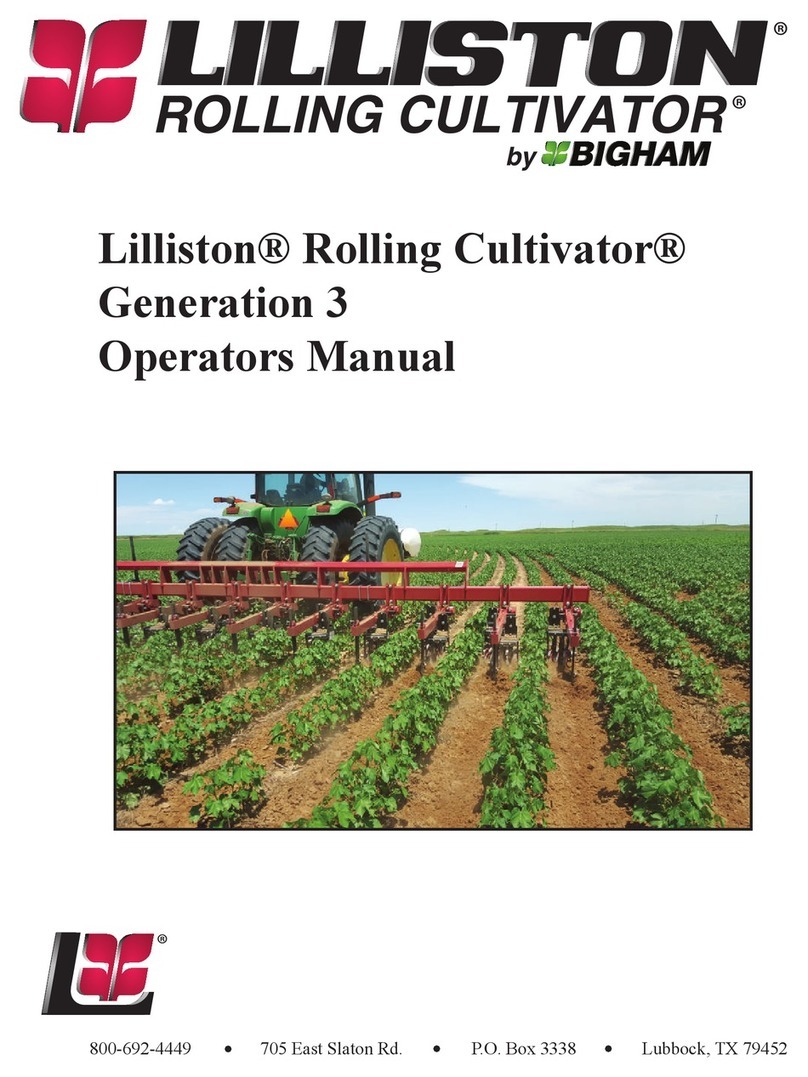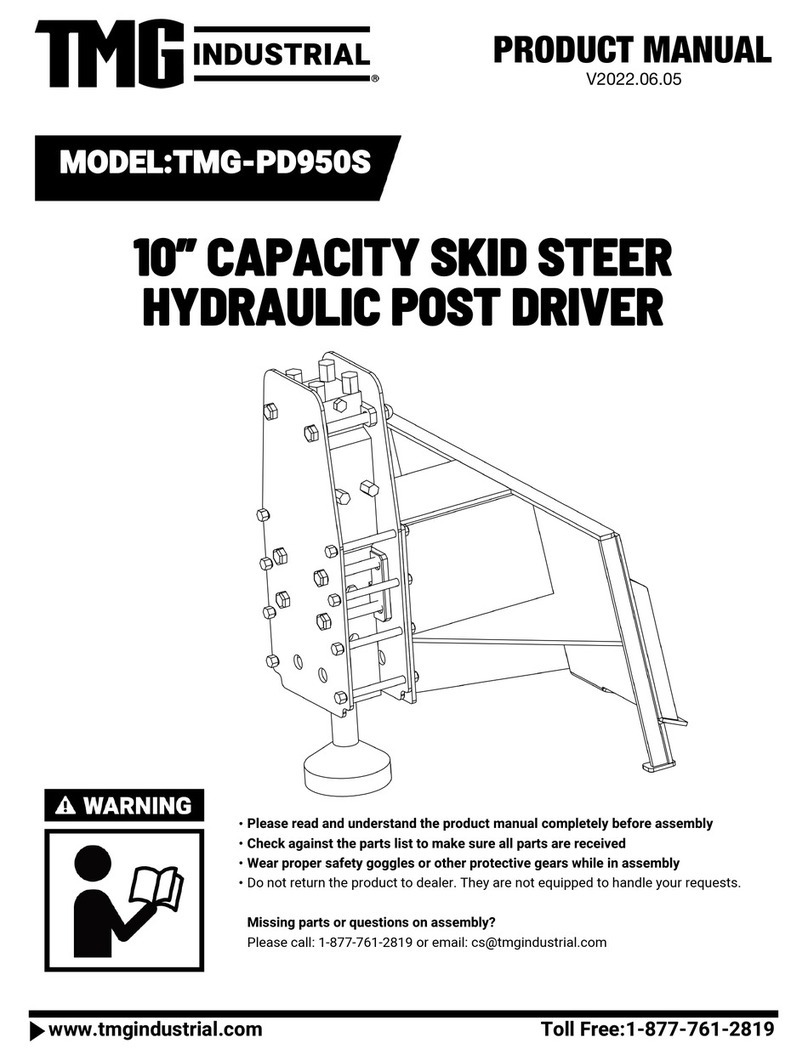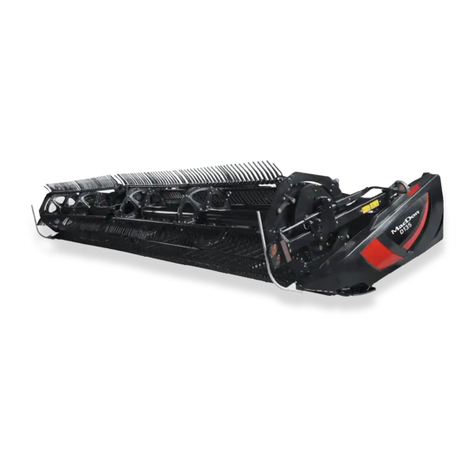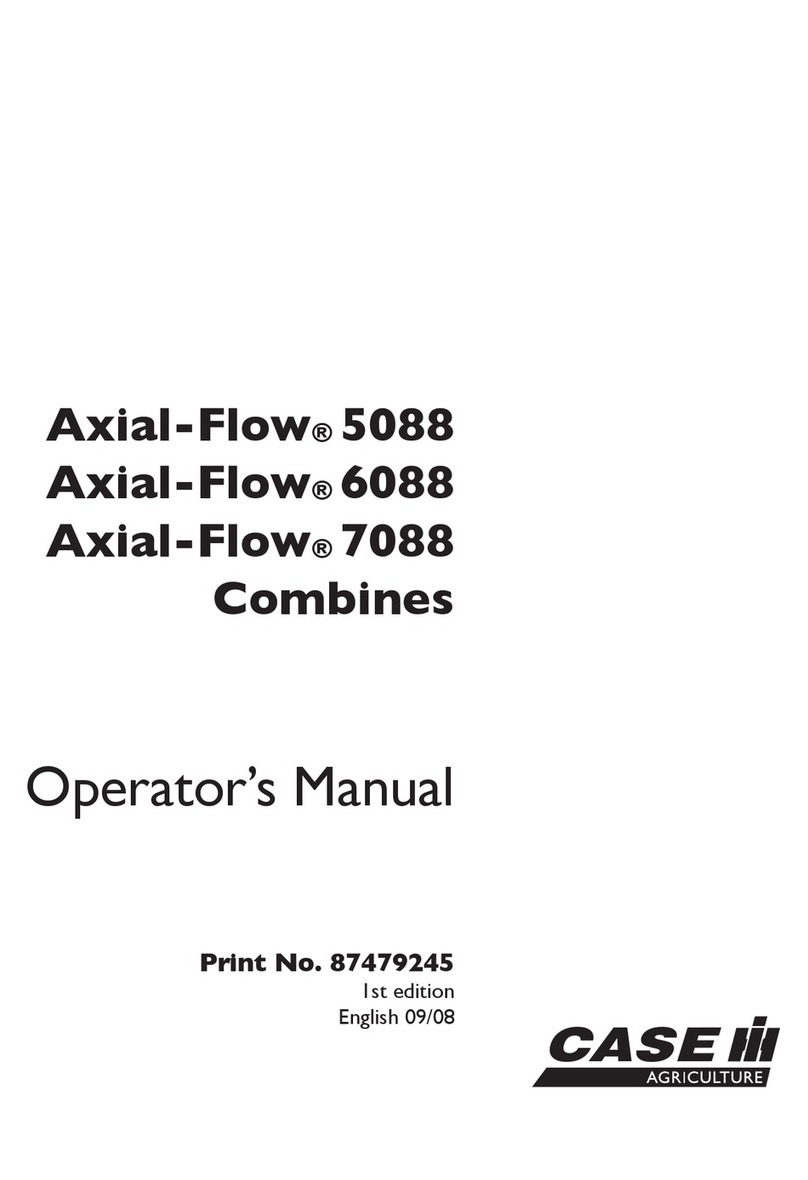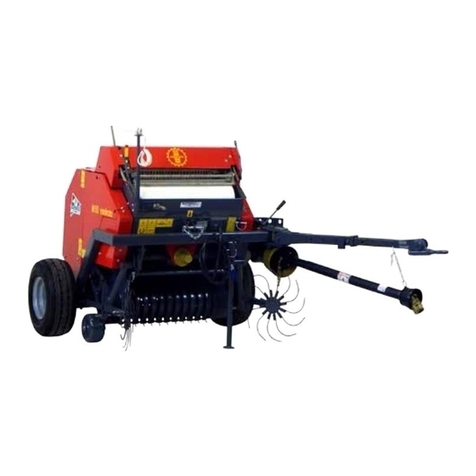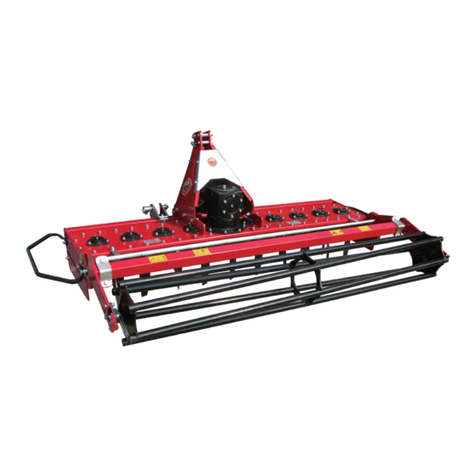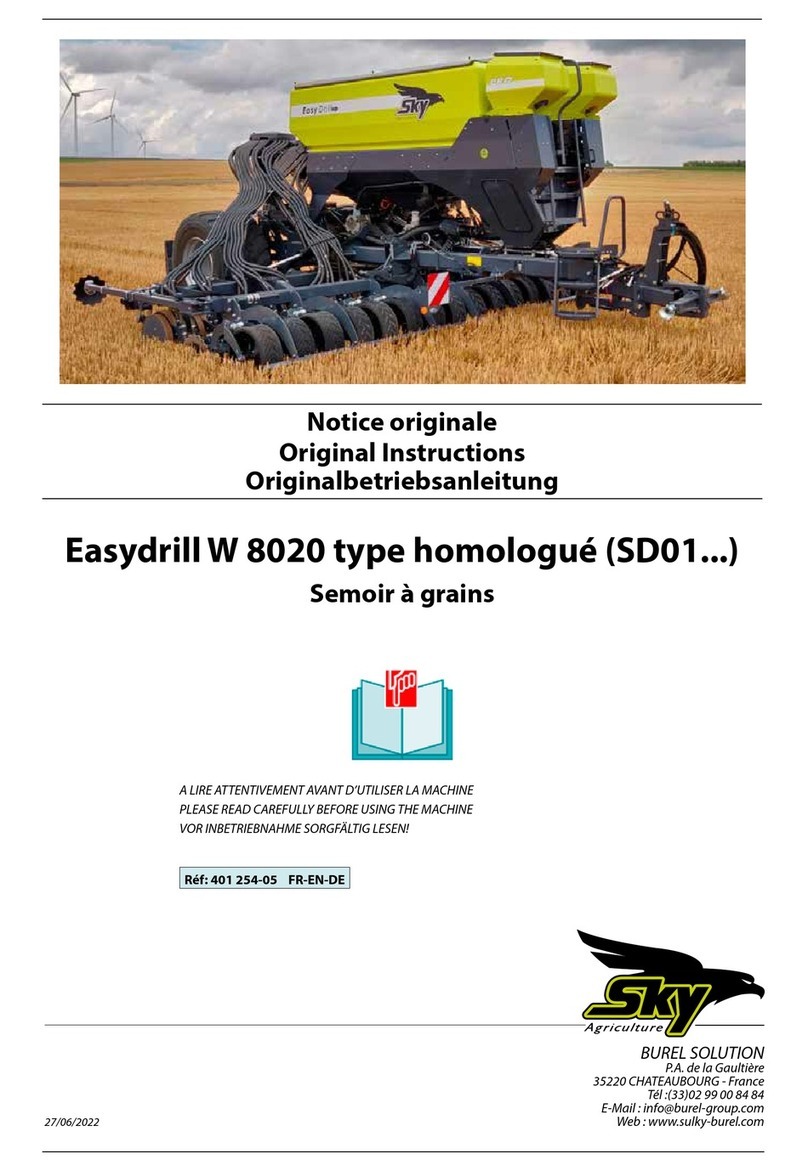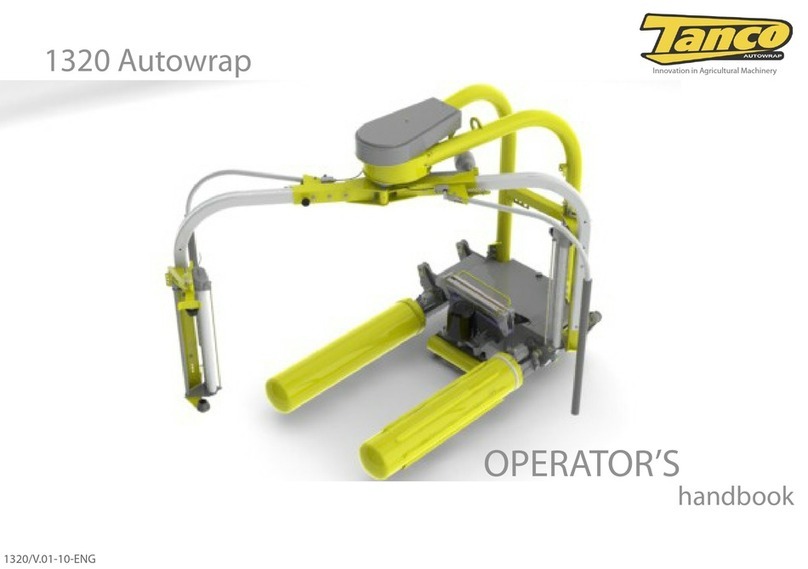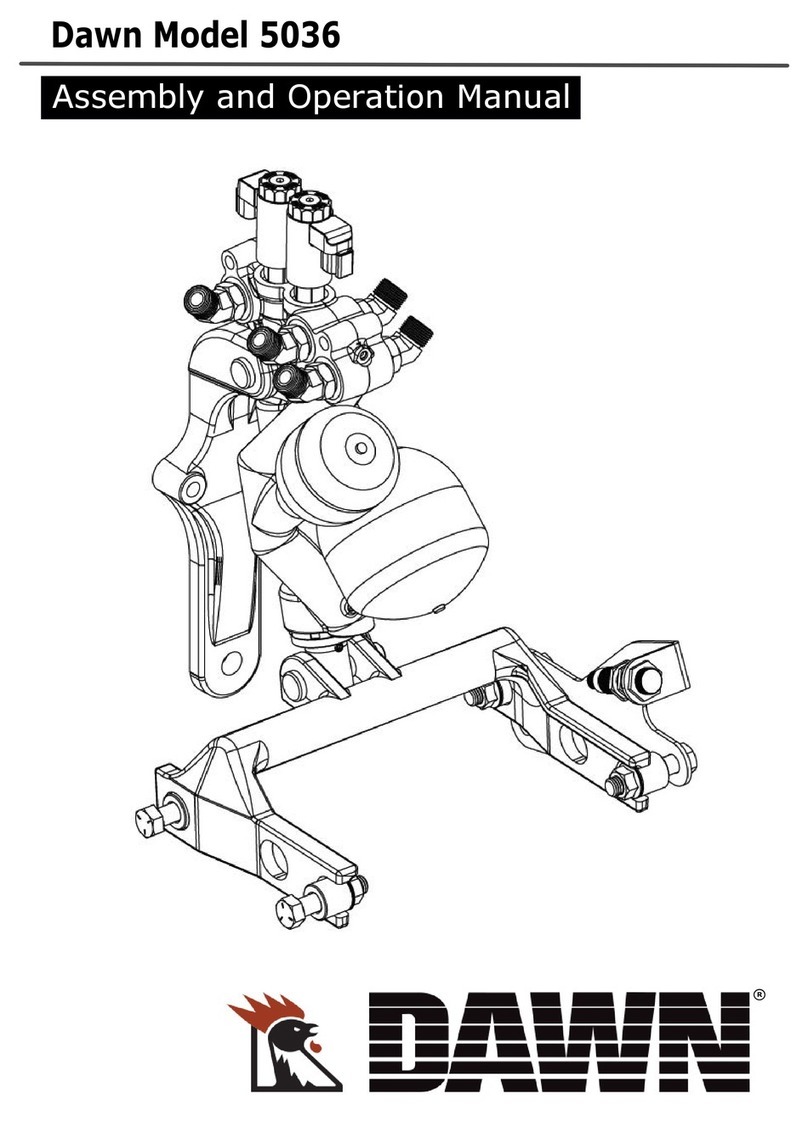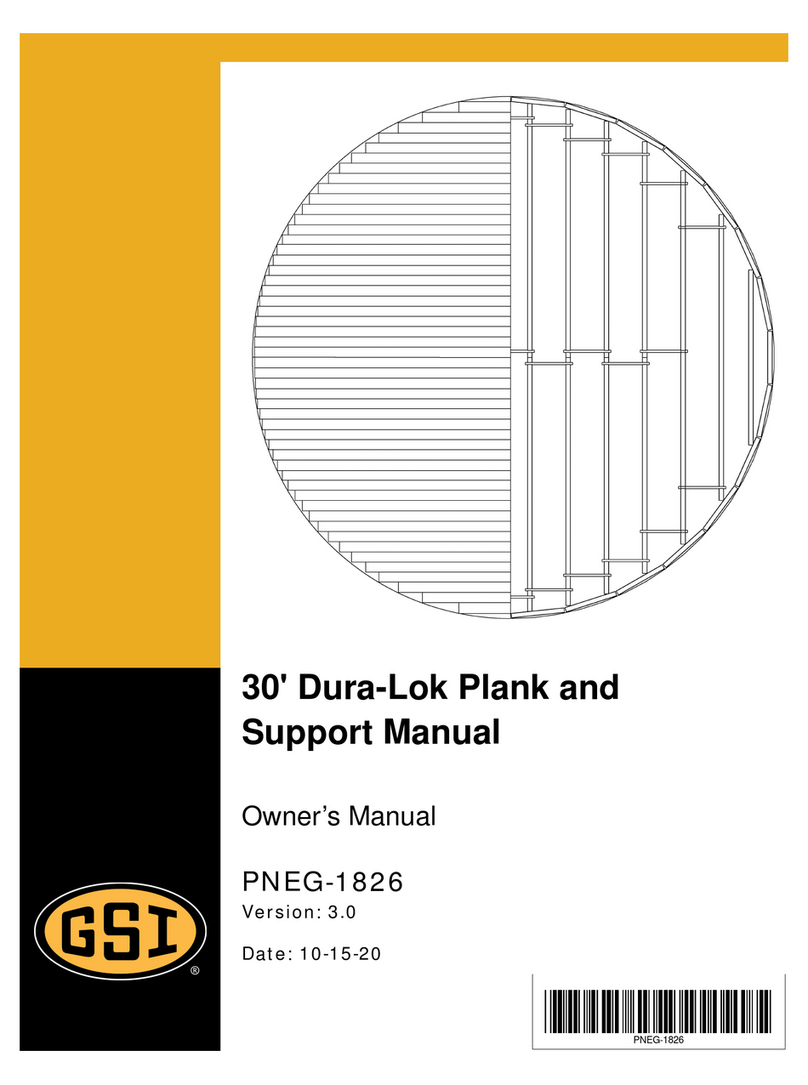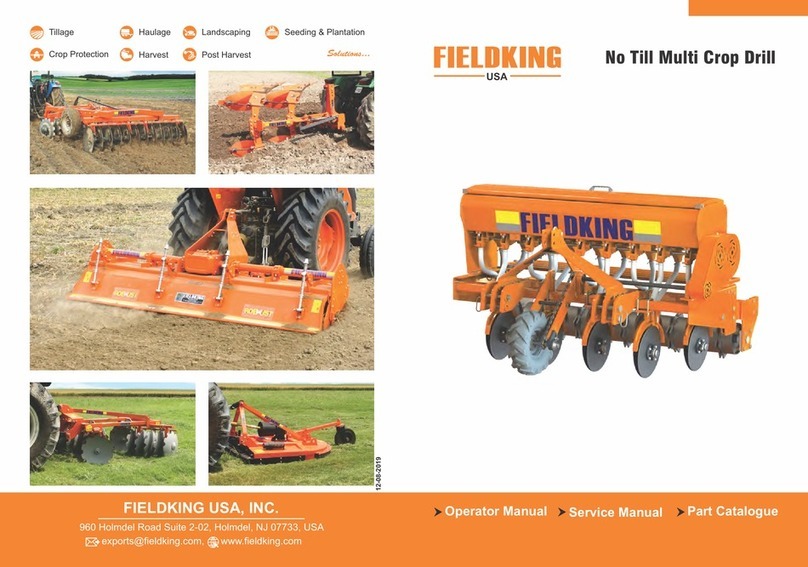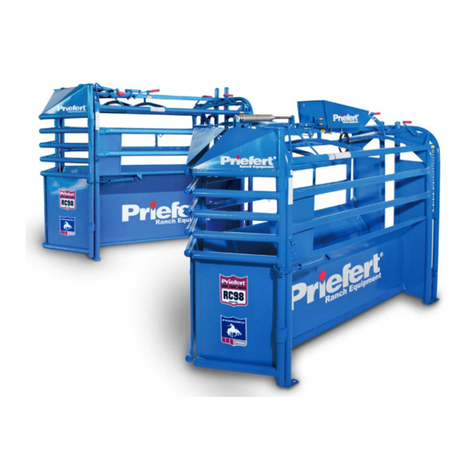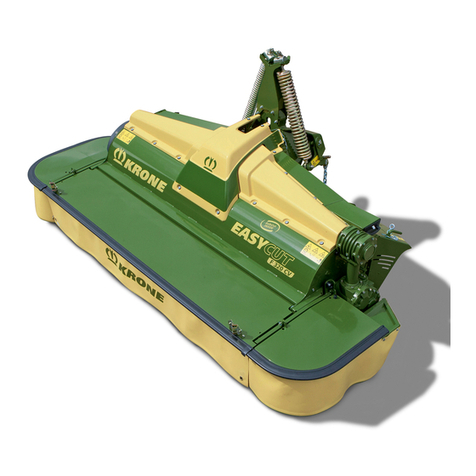Bigham HC40SF User manual

OWNER’S MANUAL
Stack Fold Hipper
HC40SF, HT40SF, HR40SF –16 row 30 / 12 row 40 / 12 row 38
HC36SF, HT36SF, HR36SF –12 row 36
HC32SF, HT32SF, HR32SF –12 row 30
1220 E Durkee Street, Carlisle, AR 72024
870-552-7517
870-552-3303
BighamAg.com
Publication # Date: 8/19/2019

TABLE OF CONTENTS
WARRANTY…………………………………………………………………………………….……….
3
INTRODUCTION……………………………………………………………………………………..…
4
SAFETY………………………………………………………………………………………………..…
5
SAFETY SIGNAL WORDS…………………………………………………………………………….
5
GENERAL SAFETY GUIDELINES…………………………………………………………………....
6
SAFETY SIGN LOCATIONS………………………………………………………………………......
7
SAFETY DECAL CARE……………………………………………………………………………...…
10
TIRE SAFETY……………………………………………………………………………………………
10
LIGHTING AND MARKING………………………………………………………………………….…
11
PERSONAL PROTECTIVE EQUIPMENT……………………………………………………………
12
BEFORE OPERATION…………………………………………………………………………………
12
DURING OPERATION………………………………………………………………………………….
13
HIGHWAY AND TRANSPORTATION OPERATIONS……………………………………………...
14
FOLLOWING OPERATION…………………………………………………………………………….
15
UNIT FEATURE ADJUSTMENTS…………………………………………………………………….
19
FRAME HITCH COMPONENTS………………………………………………………………………
24
WING FRAME ASSEMBLY COMPONENTS………………………………………………………...
25
LEVELING BAR COMPONENTS……………………………………………………………………..
26
LIFT ARM ASSEMBLIES……………………………………………………………………………….
27
STACK LOCK ASSEMBLIES………………………………………………………………………….
28
REAR BASKET ASSEMBLIES………………………………………………………………………...
30
LINKAGE ARM ASSEMBLY…………………….……………………………………………………..
34
CHOPPER BASKET ASSEMBLIES………………………………………………………………….
35
TUMBLER BASKET ASSEMBLIES…………………………………………………………………..
36
ROLLER DRUM ASSEMBLIES………………………………………………………………………..
37
ROLLER SCRAPER ASSEMBLIES…………………………………………………………………..
38
FURROW ASSEMBLIES……………………………………………………………………………….
39
GAUGE WHEEL ASSEMBLIES……………………………………………………………………….
42
HYDRAULIC ASSEMBLIES……………………………………………………………………………
45

Bigham Ag Stack Fold Hipper Page | 3
BIGHAM AG EQUIPMENT
A MESSAGE TO THE OWNER AND OPERATOR:
This machine was carefully designed and manufactured to give you dependable service. To keep it running
efficiently, read the instructions in this Operator’s Manual. Check each item and acquaint yourself with the
adjustments required to obtain efficient operation and maximum performance. Remember, the machines
performance depends on how you operate and care for it.
After the operating season, thoroughly clean your machine and inspect it. Preventive maintenance saves time and
pays dividends. Your dealer has original equipment parts which assure proper fit and best performance. Record
the model number, serial number and date of purchase in the space provided on this page. Your dealer needs this
information to give you efficient service when you order parts or attachments. The model number and serial
number appear on the identification plate on the front left side of the tool bar mast.
The Warranty on your machine is included with this manual. Your dealer will review both this manual and the
warranty with you when you take delivery of your machine.
Manufactured By
Bigham Brothers Inc. –Carlisle, AR
Model # ________________________
Serial # _________________________

Bigham Ag Stack Fold Hipper Page | 4
INTRODUCTION
Thank you for purchasing a Bigham Hipper tillage implement. We hope you will get many years of productive
use from it. The Hipper can simultaneously prepare seed beds, shape furrows, and form drainage or irrigation
in a single pass.
This implement is designed to be pulled by a ROPS protected tractor of proper size.
All product users must read and understand this manual prior to equipment operation. This manual is
considered part of your machine and should always remain with the machine. Do not allow anyone to operate
or maintain this equipment who has not fully read and comprehended this manual. Failure to follow the
recommended procedures may result in personal injury or death or equipment damage.
Information in this manual is designed to help owners and operators to obtain the best results and safe
operation from their investment. The life of any machine depends largely on the care it is given and we
suggest that the manual should be read and understood and referred to frequently. If for any reason you do
not understand the instructions and safety requirements, please contact your authorized dealer. The intent of
this manual is to provide guidelines to cover general use and to assist in avoiding accidents and injuries.
There may be times when circumstances occur that are not covered in the manual. At those times it is best to
use common sense and contact your authorized dealer or our factory.
The requirements of safety cannot be emphasized enough in this publication. We urge you to make safety
your top priority when using and maintaining the equipment. We strongly advise that anyone allowed to
operate this equipment be thoroughly trained and tested, to prove they understand the fundamentals of safe
operation.
Some photographs, diagrams or illustrations in this manual may show doors, guards and shields opened or
removed to aid in clarity and understanding of a particular procedure. All guards, shields and safety devices
must be in their proper position prior to operation.

Bigham Ag Stack Fold Hipper Page | 5
SAFETY
Read and understand this manual and all safety signs before operating and maintaining. Review the safety
instructions and precautions annually.
TAKE NOTE! THIS SAFETY ALERT SYMBOL FOUND THROUGHOUT THIS MANUAL IS USED TO CALL
YOUR ATTENTION TO INSTRUCTIONS INVOLVING YOUR PERSONAL SAFETY AND THE SAFETY OF
OTHERS. FAILURE TO FOLLOW THESE INSTRUCTIONS CAN RESULT IN INJURY OR DEATH.
SAFETY SIGNAL WORDS
Note the use of the signal words DANGER, WARNING and CAUTION with the safety messages. The
appropriate signal word for each has been selected using the following guidelines:
DANGER: Indicates an imminently hazardous situation that, if not avoided, will result in death or
serious injury. This signal word is to be limited to the most extreme situations typically for machine
components which, for functional purposes, cannot be guarded.
WARNING: Indicates a potentially hazardous situation that, if not avoided, could result in death or
serious injury, and includes hazards that are exposed when guards are removed. It may also be used
to alert against unsafe practices.
CAUTION: Indicates a potentially hazardous situation that, if not avoided, may result in minor or
moderate injury. It may also be used to alert against unsafe practices.
NOTICE is used to address safety practices not related to personal safety.
THIS SYMBOL MEANS:
ATTENTION!
BECOME ALERT!
YOUR SAFETY IS INVOLVED!

Bigham Ag Stack Fold Hipper Page | 6
GENERAL SAFETY GUIDELINES
Safety of the operator and any bystanders is one of the main concerns in designing and developing a new
piece of equipment. Designers and manufacturers build in as many safety features as possible. However,
every year many accidents occur which could have been avoided by a few seconds of thought and a more
careful approach to handling equipment. You, the operator, can avoid many accidents by observing the
following precautions in this section. To avoid personal injury, study the following precautions and insist those
working with you, or for you, follow them.
Replace any CAUTION, WARNING, DANGER or instruction safety decal that is not readable or is missing.
Location of such decals is indicated in this booklet.
Do not attempt to operate this equipment under the influence of drugs or alcohol. Do not use the equipment is
alertness or coordination is impaired.
Review the safety instructions with all users annually.
This equipment is dangerous to children and persons unfamiliar with its operation. The operator should be a
responsible adult familiar with farm machinery and trained in this equipment’s operations. Do not allow
persons to operate or assemble this unit until they have read this manual and have developed a
thorough understanding of the safety precautions and of how it works.
Do not read, eat, drink, talk or text or use a mobile phone while using this equipment.
To prevent injury or death, use a tractor equipped with a Roll Over Protective System (ROPS). Do not paint
over, remove or deface any safety signs or warning decals on your equipment. Observe all safety signs and
practice the instructions on them.
Never exceed the limits of a piece of machinery. If its ability to do a job, or to do so safely, is in question –DO
NOT TRY IT.
Stay clear of any moving parts, such as shafts, couplings and universal joints.
Do not allow anyone to ride on any part of the equipment for any reason.
Assure that all bystanders are at a safe distance before operating or maintaining this equipment.

Bigham Ag Stack Fold Hipper Page | 7
SAFETY SIGN LOCATIONS
Safety Sign location is shown below.
Front of Toolbar, End of LH Wing
Front of Toolbar, LH Hinge

Bigham Ag Stack Fold Hipper Page | 8
3-Point Hitch
Front of Toolbar, RH Hinge

Bigham Ag Stack Fold Hipper Page | 9
REMEMBER: If Safety Signs have been damaged, removed, become illegible or parts replaced without
decals, new decals must be applied. New decals are available from your authorized distributor or factory.
Front of Toolbar, End of Wing & Center
Rear of Toolbar, End of Wing & Center
399-303
Reflector, Yellow
2”x9”
399-304
Reflector, Red 2”x9”
399-300
Sign, SMV 2-Hole Galvanized
Rear of Toolbar, Center Frame

Bigham Ag Stack Fold Hipper Page | 10
SAFETY DECAL CARE
•Keep safety signs clean and legible at all times.
•Replace safety signs that are missing or have become illegible.
•Replaced parts that displayed a safety sign should also display the current sign.
•Safety signs are available from your Distributor or Dealer Parts Department or the factory.
How to Install Safety Signs:
•Be sure that the installation area is clean and dry.
•Decide on the exact position before you remove the backing paper.
•Remove the smallest portion of the split backing paper.
•Align the decal over the specified area and carefully press the small portion with the exposed sticky
backing in place.
•Slowly peel back the remaining paper and carefully smooth the remaining portion of the decal in place.
•Small air pockets can be pierced with a pin and smoothed out using the piece of decal backing paper.
TIRE SAFETY
•Failure to follow proper procedures when mounting a tire on a wheel or rim can produce an explosion
which may result in serious injury or death.
•Do not attempt to mount a tire unless you have the proper equipment and experience to do the job.
•Inflating or servicing tires can be dangerous. Whenever possible, trained personnel should be called to
service and/or mount tires.
•Always order and install tires and wheels with appropriate capacity to meet or exceed the anticipated
weight to be placed on the equipment.
•Tire changing can be dangerous and should be performed by trained personnel using the correct tools and
equipment.

Bigham Ag Stack Fold Hipper Page | 11
•When inflating tires, use a clip-on chuck extension hose long enough to allow you to stand to one side NOT
in front of or over the tire assembly. Use a safety cage if available.
•When removing and installing wheels, use wheel handling equipment adequate for the weight involved.
•The rims and tires should be mounted on the feeder with the valve stem to the inside. We use reverse disc
rims as a protection that livestock do not step on the valve stems and break them off. Be sure you have
proper tire pressure and the lug nuts are properly tightened. Check wheel bearings on a regular basis and
grease semiannually.
LIGHTING AND MARKING
•It is the responsibility of the customer to know the lighting and marking requirements of the local
highway authorities and to install and maintain the equipment to provide compliance with the
regulations. Add extra lights when transporting at night or during periods of limited visibility.
•Lighting kits ship standard with each unit from the Bigham factory.
•An SMV emblem ships standard on each unit from the Bigham factory. Always ensure the emblem is in
place when transporting on public roadways. Keep it clean and bright.

Bigham Ag Stack Fold Hipper Page | 12
PERSONAL PROTECTIVE EQUIPMENT
•Wear protective clothing and equipment appropriate for the job, such as safety shoes, safety glasses,
hard hat and ear plugs.
•Clothing should fit snug without fringes or pull strings to avoid entanglement with moving parts.
•Prolonged exposure to loud noise can cause hearing impairment or hearing loss. Wear suitable hearing
protection such as ear muffs or earplugs.
•Operating equipment requires the operator’s full attention. Avoid wearing radio headphones or earbuds
while operating equipment.
BEFORE OPERATION
•Carefully study and understand this manual.
•Do not wear loose-fitting clothing which may catch in moving parts.
•Always wear protective clothing and substantial shoes.
•Keep wheel lug nuts or bolts tightened to specified torque.
•Assure that agricultural implement tires are inflated evenly.
•Give the unit a visual inspection for any loose bolts, worn parts or cracked welds, and make necessary
repairs. Follow the maintenance safety instructions included in this manual.
•Be sure that there are no tools lying on or in the equipment.
•Do not use the unit until you are sure that the area is clear, especially children and animals.
•Don’t hurry the learning process or take the unit for granted. Ease into it and become familiar with your
new equipment.

Bigham Ag Stack Fold Hipper Page | 13
•Practice operation of your equipment and its attachments. Completely familiarize yourself and other
operators with its operation before using.
•Use a tractor equipped with a Roll Over Protective System (ROPS) and fasten your seat belt prior to
starting the engine.
DURING OPERATION
•Children should never be allowed on the equipment.
•Never carry riders or allow children to operate equipment.
•Clear the area of small children and bystanders before moving the equipment.
•Securely attach equipment to towing unit, using a hardened 3/4” pin, a metal retainer, and safety chains if
required. Shift towing unit to a lower gear before going down steep downgrades, thus using the engine as
a retarding force. Keep towing vehicle in gear at all times. Slow down for corners and rough terrain.
•Make sure you are in compliance with all local and state regulations regarding transporting equipment on
public roads and highways. Lights and slow moving signs must be clean and visible by overtaking or
oncoming traffic when feeder is transported.
•SAFETY CHAIN - If equipment is going to be transported on a public highway, a safety chain should be
obtained and installed. Always follow state and local regulations regarding a safety chain and auxiliary
lighting when towing farm equipment on a public highway. Be sure to check with local law enforcement
agencies for your own particular regulations. Only a safety chain (not an elastic or nylon/plastic tow strap)
should be used to retain the connection between the towing and towed machines in the event of separation
of the primary attaching system.
•Install the safety chain by crossing the chains under the tongue and secure to the draw bar cage or hitch or
bumper frame.
•Beware of bystanders, particularly children! Always look around to make sure that it is safe to start the
engine of the towing vehicle or move the unit. This is particularly important with higher noise levels and
quiet cabs, as you may not hear people shouting.
•NO PASSENGERS ALLOWED - Do not carry passengers anywhere on, or in, the tractor or equipment,
except as required for operation.

Bigham Ag Stack Fold Hipper Page | 14
•Keep hands and clothing clear of moving parts.
•Always keep all shields and guards in place and securely fastened.
•Do not clean, lubricate or adjust your equipment while it is moving.
•When halting operation, even periodically, set the tractor or towing vehicle brakes, disengage the PTO,
shut off the engine and remove the ignition key.
•Be especially observant of the operating area and terrain - watch for holes, rocks or other hidden hazards.
Always inspect the area prior to operation.
−DO NOT operate near the edge of drop-offs or banks.
−DO NOT operate on steep slopes as overturn may result.
−Operate up and down (not across) intermediate slopes. Avoid sudden starts and stops.
HIGHWAY AND TRANSPORT OPERATIONS
•Adopt safe driving practices:
−Keep the brake pedals latched together at all times. NEVER USE INDEPENDENT BRAKING WITH
MACHINE IN TOW AS LOSS OF CONTROL AND/OR UPSET OF UNIT CAN RESULT.
−Always drive at a safe speed relative to local conditions and ensure that your speed is low enough for
an emergency stop to be safe and secure. Keep speed to a minimum.
−Reduce speed prior to turns to avoid the risk of overturning.
−Avoid sudden uphill turns on steep slopes.
−Always keep the tractor or towing vehicle in gear to provide engine braking when going downhill. Do
not coast.
−Do not drink and drive!
•Comply with state and local laws governing highway safety and movement of farm machinery on public
roads.
•Use approved accessory lighting flags and necessary warning devices to protect operators of other
vehicles on the highway during daylight and nighttime transport. Various safety lights and devices are
available from your dealer.
•The use of flashing amber lights is acceptable in most localities. However, some localities prohibit their
use. Local laws should be checked for all highway lighting and marking requirements.
•When driving the tractor and equipment on the road or highway under 40 kph (20 mph) at night or during
the day, use flashing amber warning lights and a slow moving vehicle (SMV) identification emblem.
•Plan your route to avoid heavy traffic.

Bigham Ag Stack Fold Hipper Page | 15
•Be a safe and courteous driver. Always yield to oncoming traffic in all situations, including narrow bridges,
intersections, etc.
•Be observant of bridge loading ratings. Do not cross bridges rated lower than the gross weight as which
you are operating.
•Watch for obstructions overhead and to the side while transporting.
•Always operate equipment in a position to provide maximum visibility at all times. Make allowances for
increased length and weight of the equipment when making turns, stopping the unit, etc.
•Pick the levelest possible route when transporting across fields. Avoid the edges of ditches or gullies and
steep hillsides.
•Be extra careful when working on inclines.
•Maneuver the tractor or towing vehicle at safe speeds.
•Avoid overhead wires or other obstacles. Contact with overhead lines could cause serious injury or death.
•Avoid loose fill, rocks and holes; they can be dangerous for equipment operation or movement.
•Allow for unit length when making turns.
•Operate the towing vehicle from the operator’s seat only.
•Never stand alongside of unit with engine running or attempt to start engine and/or operate machine while
standing alongside of unit.
•Never leave running equipment attachments unattended.
•As a precaution, always recheck the hardware on equipment following every 100 hours of operation.
Correct all problems. Follow the maintenance safety procedures.
FOLLOWING OPERATION
•Following operation, or when unhitching, stop the tractor or towing vehicle, set the brakes, disengage the
PTO and all power drives, shut off the engine and remove the ignition keys.
•Clean, inspect, service and make necessary repairs to the equipment when parking it for long periods of
time or at the end of a working season. This will help ensure that the unit will be ready for use the next
time you hook up to it.
•Store the unit in an area away from human activity.
•Do not park equipment where it will be exposed to livestock for long periods of time. Damage and livestock
injury could result.
•Do not permit children to play on or around the stored unit.
•Make sure all parked machines are on a hard, level surface and engage all safety devices.

Bigham Ag Stack Fold Hipper Page | 16
•Wheel chocks may be needed to prevent unit from rolling.
PERFORMING MAINTENANCE
•Do not allow anyone to perform maintenance on this equipment who has not been properly trained in its
safe operation.
•Good maintenance is your responsibility. Poor maintenance is an invitation to trouble. Proper servicing
and adjustments are key to the long life of any implement. With careful inspection and routine
maintenance, costly downtime and repairs can be avoided.
•Some parts and assemblies can be quite heavy. Before attempting to unfasten any part or assembly,
arrange to support it by means of a hoist, by blocking or by use of an adequate arrangement to keep it
from falling, tipping, swinging or moving in any manner which may hurt somebody or damage the
equipment.
•Always use lifting equipment that is adequately rated to do the job. Never lift equipment over people.
•Make sure there is plenty of ventilation. Never operate the engine of the towing vehicle in a closed
building. The exhaust fumes may cause asphyxiation.
•Before working on the equipment, stop the towing vehicle, set the brakes, disengage the PTO and all
power drives, shut off the engine and remove the ignition keys.
•Be certain all moving parts on attachments have come to a complete stop before attempting to perform
maintenance.
•Always use a safety support and block the wheels. Never use a jack to support the equipment.
•Always use the proper tools or equipment for the job at hand.
•Use extreme caution when making adjustments.

Bigham Ag Stack Fold Hipper Page | 17
•Never replace hex bolts with less than grade five bolts unless otherwise specified.
•After servicing, be sure all tools, parts and service equipment are removed.
•Where replacement parts are necessary for periodic maintenance and servicing, genuine factory
replacement parts must be used to restore your equipment to original specifications. The manufacturer
will not claim responsibility for use of unapproved parts and/or accessories and other damages as a
result of their use.
•If equipment has been altered in any way from original design, the manufacturer does not accept any
liability for injury or warranty.
•Do not alter the equipment or replace parts with other brands. Doing so can cause the equipment to
perform improperly and may lead to breakage causing bodily injury or death.
•If repairs require the use of a torch or electric welder, be sure that all flammable and combustible
materials are removed.
•Do not weld or cut on any tank containing oil, fuel or their fumes or other flammable material, or any
container whose previous contents are unknown.
•Cleaning solvents should be used with care. Petroleum based solvents are flammable and present a
fire hazard. Don’t use gasoline. All solvents must be used with adequate ventilation and their vapors
should not be inhaled.

Bigham Ag Stack Fold Hipper Page | 18
Stack Lock Adjustment
The BIGHAM Ag Stack Fold Hipper Implement is equipped with the BIGHAM STACK LOCK feature. This feature
helps lock the two lift arms together when the Implement is in the Stacked (folded) position. To ensure that this Stack
Lock Feature is always engaged, there has been some adjustment built into the assembly. To make those adjustments,
please refer to the steps below.
STACK LOCK not engaging properly (i.e. not meeting in the middle) –
- With the arms in the folded position, take a measurement of how far the components are from touching.
- Fold the arms down, and add shims as necessary to close the gap between the male (Figure 2) and female
(Figure 1) sides of the Stack Lock assembly. Longer bolts may be needed as shims are added.
- Stack Lock Assembly should engage just before the arms are fully folded to ensure a proper engagement.
STACK LOCK alignment is off vertically or horizontally –
- Slightly loosen the bolts of the male & female components. Both mounting plates are slotted in opposite
directions. Move the plates as necessary to ensure proper alignment.
- Fold the arms and make sure that the alignment is correct, then unfold the arms and tighten the bolts.
Figure 1 Figure 2
Figure 3 (STACK LOCK engagement)
Storage Stand Use
The adjustable storage stands on the back of the hipper are designed to be used when the unit is not in field
operation. FAILURE TO PROPERLY RAISE AND PIN THE STORAGE STANDS WILL RESULT IN DAMAGE TO THE
STANDS, AND POSSIBLY THE HIPPER FRAME, WHEN OPERATING THE HIPPER IMPLEMENT!!

Bigham Ag Stack Fold Hipper Page | 19
Furrowing Plow Adjustment
The Hipper Implement is equipped with an adjustable foot piece for mounting the furrow plow. Different size
plows with different bolt configurations can be mounted to the foot piece for different field conditions. The type of soil, the
soil conditions, and the speed of the tractor can all contribute to the type of furrow needed for each farming operation.
Slotted sweeps come standard with the Hipper Implement, but if the Hipper Implement is equipped with a single mounting
bolt in the plow, make sure the furrowing plow is aligned properly with the furrow shank. If the plow is mounted with a tilt
to one side of the shank it could result in the furrowing plow throwing more soil to one side of the furrow than the other,
creating undesirable seedbed formation.
Setting the Furrowing Plow Depth
Each Hipper Implement comes from BIGHAM with a specific set up on the furrowing plow depth. A general good
initial setting is with the Hipper Implement drum, chopper, or tumbler basket 4” to 4.5” from a good flat surface when the
furrow plows are evenly touching the same flat surface. Depth of each assembly can be adjusted individually by
loosening the stud bolts (shown in Figure 4) of each furrow assembly and lowering or raising the shank to the desired
depth for the application. Always tighten the stud bolts properly prior to operation of the Hipper Implement to ensure the
Furrowing Plows keep the desired adjustment.
Figure 4
Maintaining Furrow Depth
It is critically important to maintain a uniform depth to the furrows created by the Hipper Implement. Maintaining
the depth of the furrow can be done by adjusting the two (2) gauge wheel assemblies provided with the Hipper Implement.
Adjustment procedures for the gauge wheel assemblies are shown on pg. 14 of this document.
Linkage Arm Adjustment
To create a more desirable seedbed, your BIGHAM Hipper Implement may be equipped with a set of rear basket
assemblies attached to the Hipper Implement Frame with a set of Adjustable Linkage Arms (Figure 5). These arms allow
adjustment for both height and down-pressure to assist in the formation of a proper seedbed for planting. Adjustment for
those two variables is described below.
Linkage Arm Height Adjustment –
Each Linkage arm can be moved upward and downward on the mounting tubes on the rear of the Hipper
Implement frame. This adjustment is made by loosening and removing the two bolts attaching the arm, raising or
lowering the arm as desired, and re-inserting the two bolts into the next set of alignment holes. Make sure to
tighten the bolts once the desired adjustment is complete. Linkage Arms Must be adjusted in pairs, or the arms
will not move.
Spring Down-Pressure Adjustment –

Bigham Ag Stack Fold Hipper Page | 20
Each Linkage arm also has a built in down-pressure spring to ensure that the rear tumbler baskets stay engaged
with the ground and prepare the seedbed correctly. If more down-pressure is desired, tighten the spring bolt by
turning the nut clockwise. If less down-pressure is desired, loosen the spring bolt by turning the nut counter-
clockwise. When decreasing the pressure, do NOT loosen the nut past the nylon insert in the nut.
Figure 5
This manual suits for next models
8
Table of contents
Other Bigham Farm Equipment manuals
